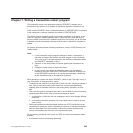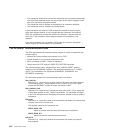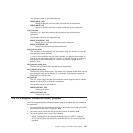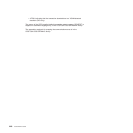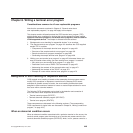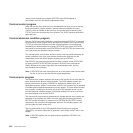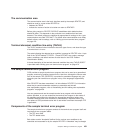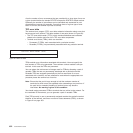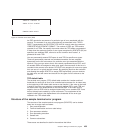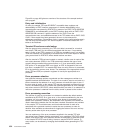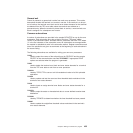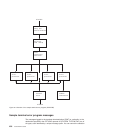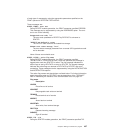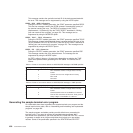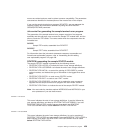
of as the number of error occurrences that are permitted for a given type of error on
a given terminal before the sample DFHTEP accepts the DFHTACP default actions.
Optionally, the number of occurrences can be controlled and accounted for over
prescribed time intervals (for example, if more than three of a given type of error
occur in an hour, the terminal is put out of service).
TEP error table
The terminal error program (TEP) error table maintains information about errors that
have occurred on a terminal. The table consists of two parts (shown in Figure 20):
v The TEP error table header (TETH), which contains addresses and constants
related to the location and size of the TEP error table components.
v Terminal error blocks (TEBs), which can be either:
– Permanent (P-TEBs), each associated with a particular terminal
– Reusable (R-TEBs), not permanently associated with any particular terminal.
TEBs maintain error information associated with terminals. You must specify the
total number of TEBs to be generated. The maximum number needed is one per
terminal. In this case the TEBs are permanent.
You can reduce the total amount of storage used for TEBs by allocating a pool of
reusable TEBs, that are not permanently associated with a particular terminal.
Reusable TEBs are assigned dynamically on the first occurrence of an error
associated with a terminal, and are released for reuse when the appropriate error
processor places the terminal out of service.
Note: Ensure that the pool is large enough to hold the maximum number of
terminals for which errors are expected to be outstanding at any one time. If
the pool limit is exceeded, handling of terminal errors may become
intermittent. No warning is given of this condition.
You should assign permanent TEBs to terminals that are critical to the network. For
the remainder of the network, you can generate a pool of reusable TEBs.
Each TEB currently in use or permanently assigned contains the symbolic terminal
identifier of the terminal, and one or more error status elements (ESEs), as shown
in Figure 21 on page 453.
TEP error table header (TETH)
Terminal error blocks (P-TEBs and R-TEBs)
Figure 20. TEP error table
452 Customization Guide




